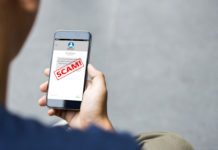
As soon as the first U.S. case of the omicron variant of the coronavirus was reported in San Francisco, California officials began sounding the same message: Don’t panic.
“We are not surprised by this. This was predictable. This was predicted,” Gov. Gavin Newsom said in a news conference yesterday. “We should assume that it’s in other states as well.”
Omicron, a highly mutated version of the coronavirus that was first identified in South Africa, has been detected in more than 25 countries. But that still raises the question: If omicron is spreading far and wide, why was the first U.S. case discovered in San Francisco?
As with most things, there is an element of randomness here. If we think back to the spring of 2020, an early coronavirus outbreak at a Seattle nursing home signaled terrible luck — not that the city was the most infected in the nation.
It is most likely a similar situation in San Francisco. The city is one of the most vaccinated places in the country — with 77% of residents fully immunized against COVID-19 — so it is not particularly susceptible to coronavirus outbreaks.
But its popularity with global travelers does make it vulnerable to contagion imported from elsewhere.
On Tuesday, before the Bay Area case was identified, Dr. Rochelle Walensky, head of the Centers for Disease Control and Prevention, announced expanded omicron screening at San Francisco International Airport, calling it one “of the busiest international airports in the country.”
Indeed, the San Franciscan infected with omicron had returned from a trip to South Africa on Nov. 22. The patient’s symptoms began three days later.
That set off a rapid chain of events. The infected person, who is between ages 18-49, was tested Sunday and got a positive result Monday. In less than 24 hours, scientists at the University of California, San Francisco, had determined that it was omicron.
Newsom chalked up the diagnosis to California having “the most robust testing program and protocols in the nation” as well as strong collaborations with major academic centers such as UCSF.
Compared with the nation overall, California does perform genetic sequencing on a higher percentage of coronavirus samples — roughly 1 in 5. (Since August, those tests have shown that at least 98% of Californians with COVID-19 have been infected with the delta variant.)
Dr. Mark Ghaly, the state’s secretary of health and human services, said the San Francisco patient was self-isolating and had mild symptoms that were improving, and that no close contacts had tested positive — what he called “a testimony to the importance of vaccinations.” The patient had received two doses of the Moderna vaccine but no booster.
Though scientists must still determine how well the shots will ultimately protect against omicron, many experts expect they will ward off severe illness and death, if not infections altogether. Answers about whether omicron is more contagious or deadly remain elusive.
In light of omicron’s arrival in the United States, Dr. Anthony Fauci, the president’s top medical adviser, said Americans should not wait for pharmaceutical companies to develop a booster shot designed for the new variant and that the available doses would provide extra protection.
“Get boosted now,” he said. “We may not need a variant-specific boost.”
This article originally appeared in The New York Times.
Copyright 2021 The New York Times Company













